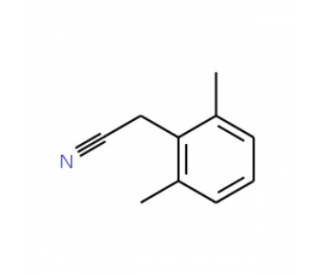详细说明
Purity
>95%, by SDS-PAGE under reducing conditions and visualized by silver stain
Endotoxin Level
<1.0 EU per 1 μg of the protein by the LAL method.
Activity
Measured by its ability to cleave the fluorogenic peptide substrate, Leu-AMC. The specific activity is >100 pmol/min/µg, as measured under the described conditions. See Activity Assay Protocol on www.RnDSystems.com
Source
Mouse myeloma cell line, NS0-derived Ser27-Leu930, with a C-terminal 10-His tag
Accession #
N-terminal Sequence
AnalysisSer27
Predicted Molecular Mass
105 kDa
SDS-PAGE
111 kDa, reducing conditions
2500-ZN |
| |
Formulation Supplied as a 0.2 μm filtered solution in Tris, NaCl and Glycerol. | ||
Shipping The product is shipped with polar packs. Upon receipt, store it immediately at the temperature recommended below. | ||
Stability & Storage: Use a manual defrost freezer and avoid repeated freeze-thaw cycles.
|
Assay Procedure
Materials
Assay Buffer: 25 mM Tris, pH 8.0
Recombinant Mouse Aminopeptidase PILS/ARTS1 (rmARTS1) (Catalog # 2500-ZN)
Substrate: Leu-AMC (Bachem, Catalog # I-1240)
F16 Black Maxisorp Plate (Nunc, Catalog # 475515)
Fluorescent Plate Reader (Model: SpectraMax Gemini EM by Molecular Devices) or equivalent
Dilute rmARTS1 to 2 µg/mL in Assay Buffer.
Dilute Substrate to 200 µM in Assay Buffer.
Load 50 µL of the 2 µg/mL rmARTS1 into a plate, and start the reaction by adding 50 µL of 200 µM Substrate. Include a Substrate Blank containing 50 µL Assay Buffer and 50 µL of 200 µM Substrate.
Read at excitation and emission wavelengths of 380 nm and 460 nm, respectively, in kinetic mode for 5 minutes.
Calculate specific activity:
Specific Activity (pmol/min/µg) = | Adjusted Vmax* (RFU/min) x Conversion Factor** (pmol/RFU) |
| amount of enzyme (µg) |
*Adjusted for Substrate Blank
**Derived using calibration standard 7-amino, 4-Methyl Coumarin AMC (Sigma, Catalog # A-9891).
Per Well:
rmARTS1: 0.1 µg
Substrate: 100 µM
Background: Aminopeptidase PILS/ARTS1
The mouse ARTS1 gene encodes aminopeptidase PILS (Puromycin-Insensitive Leucyl-Specific), which is also known as adipocyte-derived leucine aminopeptidase, type 1 tumor necrosis factor receptor shedding aminopeptidase regulator and ERAAP (the aminopeptidase associated with antigen processing in the endoplasmic reticulum) (1-3). The deduced amino acid sequence of mouse ARTS1 consists of a signal peptide and a large ectodomain. Widely expressed and releasing an N‑terminal amino acid (Leu), the enzyme may play a role in many processes such as antigen processing and angiogenesis.
References:
Miyashita, H. et al. (2002) Blood 99:3241.
Serwold, T. et al. (2002) Nature 419:480.
Schomburg, L. (2004) in Handbook of Proteolytic Enzymes. Barrett, et al. eds. p. 311, Academic Press, San Diego.
Long Name:
Aminopeptidase Puromycin-insensitive Leucyl-specific
Entrez Gene IDs:
51752 (Human); 80898 (Mouse)
Alternate Names:
Adipocyte-derived leucine aminopeptidase; A-LAP; A-LAPALAP; Aminopeptidase PILS; ARTS1; ARTS1aminopeptidase regulator of TNFR1 shedding; ARTS-1PILSAP; EC 3.4.11; EC 3.4.11.-; EC 3.4.11.1; endoplasmic reticulum aminopeptidase 1; endoplasmic reticulum aminopeptidase associated with antigen processing; ERAAP1; ERAP1; KIAA0525APPILS; PILS-AP; PILS-APERAAP; Puromycin-insensitive leucyl-specific aminopeptidase; Type 1 tumor necrosis factor receptor shedding aminopeptidase regulator











 粤公网安备44196802000105号
粤公网安备44196802000105号